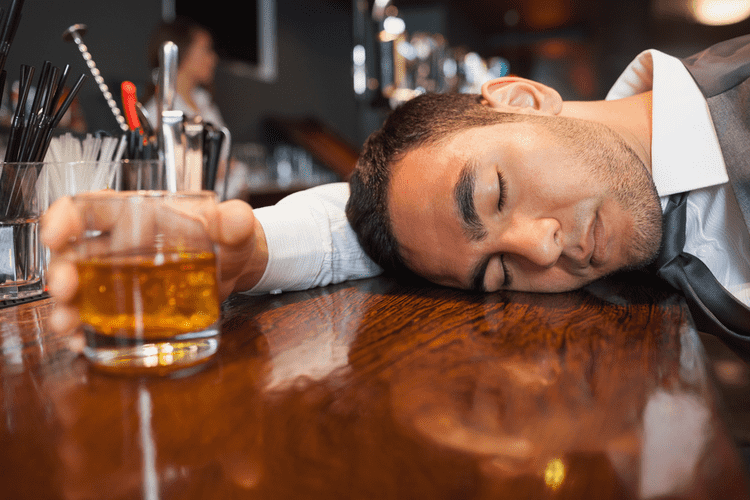Take it as directed on the prescription label drug addiction at the same time every day. Do not take this medication within 7 to 10 days of taking any opioid drugs. Other side effects not listed may also occur in some patients. If you notice any other effects, check with your healthcare professional.

Common questions about naltrexone
To learn more about this drug, including its uses and side effects, see this naltrexone oral tablet overview article. Many forms of addiction treatment rely on the strategy of sobriety or abstinence. If an individual feels they have cut down on drinking, that is deemed a success. If someone feels they have reduced cravings and urges to drink alcohol after being on naltrexone, that is considered success.
What side effects may I notice from receiving this medication?
- Craving was rated using the Penn Alcohol Craving Scale, from 0 to 6.
- Always tell your healthcare provider about any prescription or over-the-counter (OTC) medicines, vitamins/minerals, herbal products, and other supplements you are using.
- You also have to be consistent in order for TSM to be effective.
- Nausea, headache, dizziness, anxiety, tiredness, and trouble sleeping may occur.
This method is a form of naltrexone treatment https://www.implaphao.com/2024/09/17/halfway-house-vs-recovery-house-high-focus-centers/ where the goal is to change the brain’s associations with alcohol by consistently taking a naltrexone pill 1-2 hours before consuming an alcoholic drink. The Sinclair Method primarily supports goals for moderation, not abstinence. As a physician on the Monument platform, I often meet with patients to discuss if a medication-assisted treatment model, like TSM, is safe and appropriate for them. Yes, a daily dose of naltrexone works in few hours and throughout that same day. When starting naltrexone treatment, your experiences with alcohol are likely to noticeably change within the first few weeks on naltrexone.
- Call your doctor if you have any unusual problems while taking this medication.
- If you have bothersome or long-lasting digestive side effects during naltrexone treatment, talk with your doctor.
- Instead, it simply makes it so drinking no longer produces an endorphin rush or “buzz”.
- If an individual feels they have cut down on drinking, that is deemed a success.
Is there any interaction with other drugs or medications?
For naltrexone, the average elimination half-life of naltrexone is between 4 hours and 13 hours. The immediate-release pill form of naltrexone (also known as naltrexone HCL) can be detected in urine for 4-6 hours, in blood for up to 24 hours, in saliva for up to 1 day, and in hair for up to 90 days. Additionally, a multitude of personal factors like age, chronic illness, body mass, hydration, and metabolism can all impact how long naltrexone lasts in your system. So you may have a raised risk of liver problems if you drink alcohol while taking naltrexone. You should avoid drinking alcohol during treatment with naltrexone. Medications that are addictive can produce a rewarding feeling when you take them.
Critics caution that presenting it as a “quick fix” may be misleading. For many, lasting recovery requires a holistic approach that addresses the physical, emotional, and social aspects of addiction. Some people say they have experienced large reductions in craving Sinclair method by taking naltrexone while abstaining.

But any licensed prescriber can write for naltrexone—no special waiver or certification is needed. While education efforts are underway, much more needs to be done to equip providers with the tools to talk confidently about medication options. However, after 4-6 hours from the initial dose of naltrexone, this wall becomes weaker because the maximum naltrexone concentration in the blood has worn off and is being metabolized. A second drink can break this wall, and a relapse can occur. Due to naltrexone’s concentration in the blood, some individuals may require a second dose of naltrexone or a higher initial dose to ensure this “wall” remains effective. Before you have any medical tests, tell the healthcare provider in charge that you are receiving this medicine.
The Abstinence Question, and Individual Differences
Take this medication by mouth with or without food as directed by your doctor, usually once daily. This medication may be given as part of a program where a health care professional will watch you take the medication. In this case, this medication may be taken every 2 to 3 days to make it easier to schedule clinic visits. Naltrexone may be taken with food or antacids if stomach upset occurs. Naltrexone belongs to a group of drugs called opioid antagonists. This article describes the dosage of naltrexone oral tablet, as well as its strength and how to take it.




